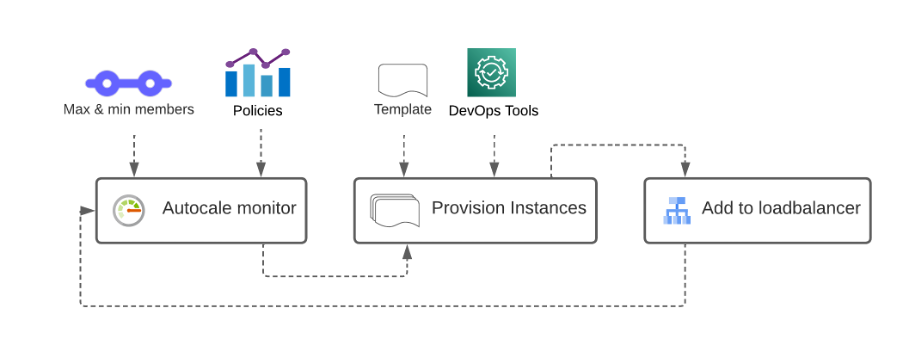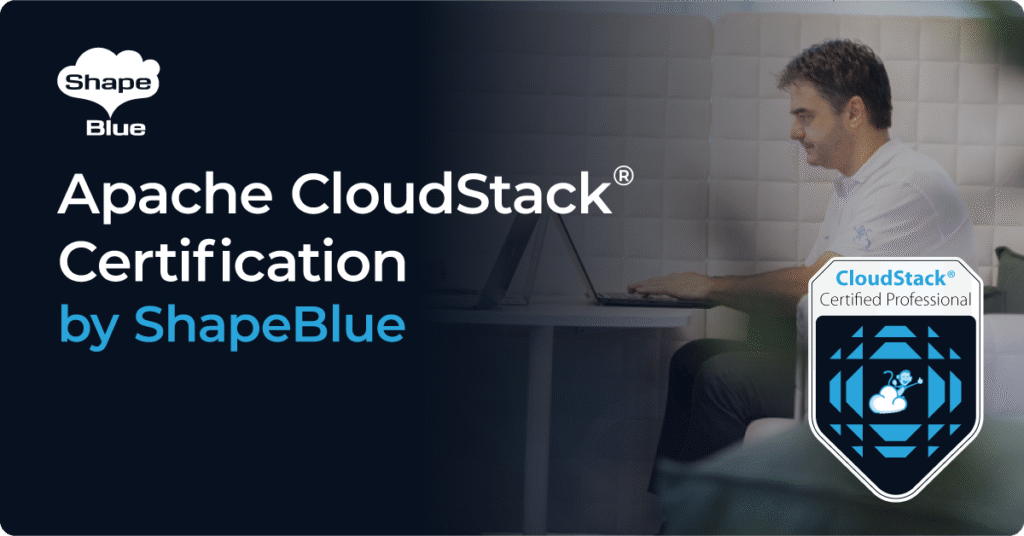Autoscaling enables the automatic adjustment of allocated cloud resources based on traffic spikes and usage patterns. When unused, resources are rigidly defined with a fixed amount of resources unable to grow as demand increases or shrink as demand decreases.
This is a crucial feature in cloud computing, where the goal is to pay only for what you need, achieved through elastic resources that can scale up or down as needed. This is in line with the idea of scalable instances and services, which provide a base level of resources and can be expanded to meet demand when needed.
When defining an autoscaling policy, users can set desired capacity constraints so that more resources can be added as traffic spikes stress resources. These policies will launch new instances that will be added to the total pool of instances already deployed by a user to meet peak traffic demand.
Without autoscaling, resources are narrowly defined and constrained within a configuration to a given set of resources. For example, if an organization has a large analytics workload that it needs to process, it may require a larger number of nodes in the application cluster than initially defined. With an autoscaling policy in place, the number of instances can automatically scale to process data in a timely manner.
Benefits when using CloudStack Autoscaling
One potential use of autoscaling would be for organizations that operate an online service that experiences fluctuations in traffic throughout the day. By using autoscaling, they could ensure that they have enough resources to handle peak traffic without over-allocating resources during low traffic, reducing costs.
Using CloudStack Autoscaling will increase the availability of the running services, scaling dynamically with the right amount of compute resources, and optimizing the application workload performance and infrastructure costs by scaling up and down based on selected metrics.

CloudStack Autoscaling can be used in a variety of different use cases, such as:
Web applications and services:
Automatically increase the number of Instances needed to handle increased traffic to a web application or service, helping to ensure that the application remains responsive and available.
Gaming:
This can help to ensure that players have a smooth experience.
E-commerce:
Handles increased traffic to an e-commerce platform. This can help to ensure that the site remains responsive and available during peak sales periods, which can help to increase sales.
Media streaming:
Helps to ensure that the service remains responsive and available, even during periods of high audience.
Data processing:
Handle increased data processing loads, helping to ensure that data processing tasks are completed in a timely manner.
Machine learning:
In a machine learning model, this can help to ensure that the model remains responsive and available during peaks.
Conclusion
CloudStack Autoscaling (available from Apache CloudStack 4.18) is a reactive type of autoscaling. It will automatically increase or decrease the number of instances in response to changing demand for the application or service. This allows for more efficient use of resources and can help reduce costs by ensuring that resources are only allocated when needed.
Marco Sinhoreli is a seasoned Technical Marketing Manager at ShapeBlue, with over 25 years of IT experience. As an Apache CloudStack expert and committer, he specializes in creating and delivering technical marketing content that bridges the gap between technology and business. Marco has consulted major companies on implementing IaaS solutions with CloudStack, focusing on delivering cloud infrastructure that supports both immediate and long-term business needs. When he’s not diving into cloud solutions, Marco loves playing guitar, exploring new places, and staying updated on politics.





